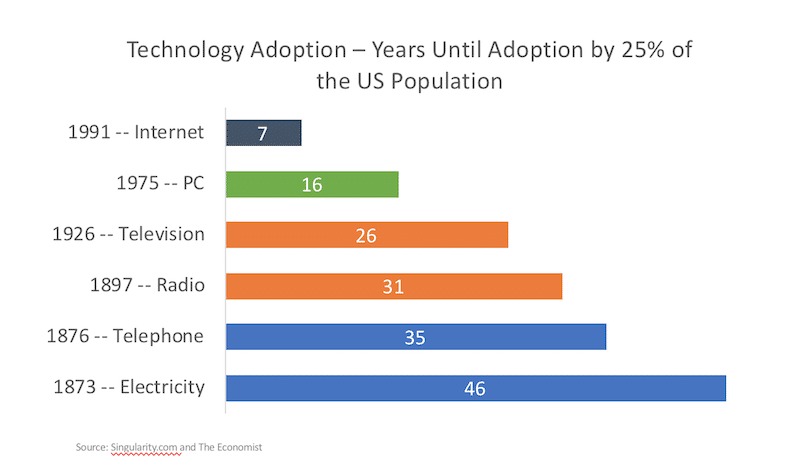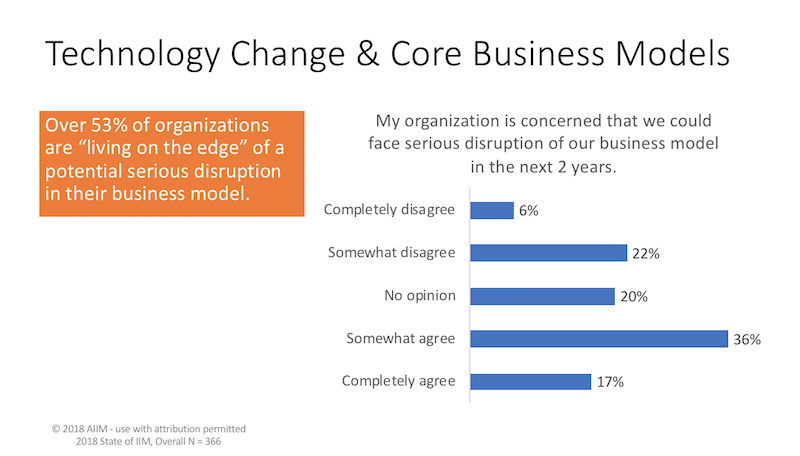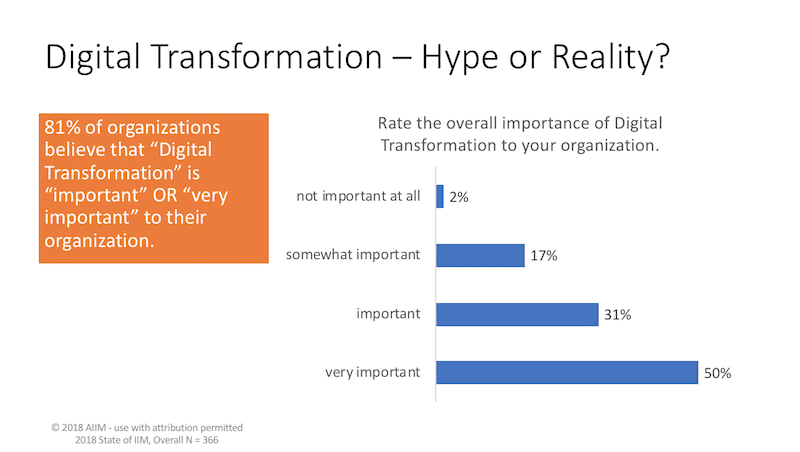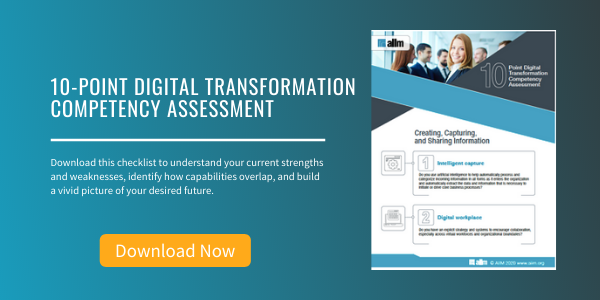
Surviving Disruption – Strategies for the Era of AI and Machine Learning
Truly disruptive moments occur only once in a generation. They occur when the cumulative inertia of technology innovation combines to disrupt business models. And the heart of disruption is ultimately when radical technology changes are standardized and then incorporated into new business models.
Let’s take a look at a couple.
The first ones in this graphic are the telephone and electricity. In the early stages of business adoption, there was a host of incompatible telephone and electrical systems, each geared to the needs of a particular company. It was only when telephone systems were interconnected – and when power systems were able to transmit power across long distances – that business transformation occurred. The same thing with radio and television technologies – they took a number of years to acquire enough critical mass to transform businesses.

I can recall only two previous times in recent memory this has happened during the time I have been in the workplace – and that was with the advent of the PC and then the arrival of the internet.
The first was during the wave of change driven by the first decentralization of computing technology, driven by Moore’s Law. That’s Gordon Moore, not Geoffrey Moore.
“Moore's law is the observation that the number of transistors in a dense integrated circuit doubles approximately every two years.”
It’s easy to forget that in 1975, the IBM Personal Computer was still six years away. Microsoft had $16,000 in revenues and three employees and sold a version of BASIC for the MITS Altair Computer. Over at Google, Larry and Sergei were four years old, and at Facebook, Mark Zuckerberg wasn't even a glimmer in anyone's eye and wouldn't appear on the scene for another seven years.
The second wave of disruption occurred as a result of Metcalfe’s Law – “the effect of a telecommunications network is proportional to the square of the number of connected users of the system.”
The real impact of web-based technology innovations and mobile innovations came when these were translated into practical business models. The real winners in this wave were not the initial technology innovators; it was those who used these massively connected networks to create new value. Again, a lot of new players on both the user and vendor sides. And a lot of departures. And not everyone saw all of this change coming. Consider this quote from AIIM:
“Despite the euphoria of Internet enthusiasts and the hyped-up selling palaver of some web services providers, we remain uncertain as to the long-run substantive benefits the Internet will bring to businesses and to individual users.” - AIIM Inform Magazine, April 1996, the month before I arrived.
So what are the changes brewing right now? What is at the heart of the sense of déjà vu that many of us have about our current point in time that feels so much like the early stages of the PC and web revolutions?
We are in the very early stages of the third round of technology disruption, driven by the explosion of data and advances in artificial intelligence and machine learning.
So as we take all of that change -- exponential change – and think about what’s coming, do organizations in this community understand the magnitude of the change that is coming? Let’s take a look at the numbers.


About John Mancini
John Mancini is the President of Content Results, LLC and the Past President of AIIM. He is a well-known author, speaker, and advisor on information management, digital transformation and intelligent automation. John is a frequent keynote speaker and author of more than 30 eBooks on a variety of topics. He can be found on Twitter, LinkedIn and Facebook as jmancini77. Recent keynote topics include: The Stairway to Digital Transformation Navigating Disruptive Waters — 4 Things You Need to Know to Build Your Digital Transformation Strategy Getting Ahead of the Digital Transformation Curve Viewing Information Management Through a New Lens Digital Disruption: 6 Strategies to Avoid Being “Blockbustered” Specialties: Keynote speaker and writer on AI, RPA, intelligent Information Management, Intelligent Automation and Digital Transformation. Consensus-building with Boards to create strategic focus, action, and accountability. Extensive public speaking and public relations work Conversant and experienced in major technology issues and trends. Expert on inbound and content marketing, particularly in an association environment and on the Hubspot platform. John is a Phi Beta Kappa graduate of the College of William and Mary, and holds an M.A. in Public Policy from the Woodrow Wilson School at Princeton University.



